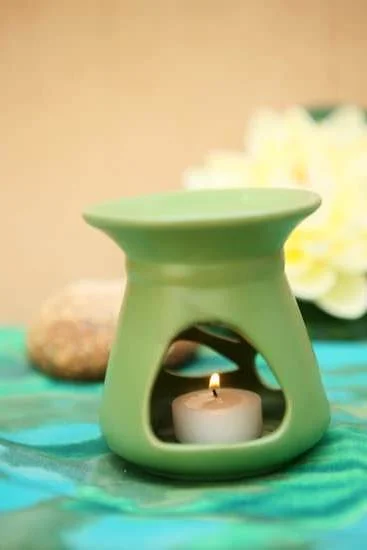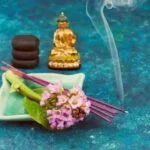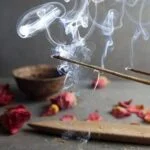Are you interested in creating aromatherapy oils at home? Aromatherapy has a rich history and offers a multitude of benefits for both physical and mental well-being. From promoting relaxation to boosting energy levels, the use of aromatherapy oils is diverse and wide-ranging. In this article, we will delve into the world of aromatherapy oils, exploring their origins, benefits, common uses, and how to create your very own blends for various purposes.
Aromatherapy has been used for centuries as a natural healing practice, with its roots tracing back to ancient civilizations such as the Egyptians, Greeks, and Romans. The therapeutic use of aromatic plant extracts continues to be popular today due to its potential in alleviating stress, improving mood, and enhancing overall health. Whether you are looking to create a relaxing atmosphere at home or seeking natural remedies for common ailments, aromatherapy oils can be a valuable addition to your wellness routine.
Understanding essential oils is pivotal in harnessing their full potential for aromatherapy. These highly concentrated plant extracts are known for their potent scent and therapeutic properties. Different types of essential oils offer unique benefits, from soothing sore muscles to uplifting the mood. It is important to have a sound knowledge of essential oils before creating your own blends to achieve desired results effectively and safely.
Understanding Essential Oils
Essential oils are concentrated liquids that contain volatile aroma compounds from plants. These oils are commonly used in aromatherapy for their therapeutic benefits and pleasant scents. They are extracted from various parts of plants, including flowers, leaves, stems, bark, and roots. Essential oils can be used topically, inhaled, or even ingested, although the latter should only be done under the guidance of a qualified professional.
Different Types of Essential Oils and Their Properties
There are numerous types of essential oils with each having unique properties and characteristics. Here is a list of some common essential oils and their associated benefits:
- Lavender oil: Known for its calming and soothing properties, often used for relaxation and to promote sleep.
- Peppermint oil: Has invigorating and energizing effects, commonly used to alleviate headaches and improve focus.
- Tea tree oil: Recognized for its antimicrobial and antifungal properties, popularly used in skincare products.
How Essential Oils Are Extracted and Produced
Essential oils can be extracted through various methods such as distillation, cold pressing, or solvent extraction. The extraction process varies depending on the plant source. For example, steam distillation is commonly used to extract oils from flowers and herbs, while citrus fruits are often cold pressed to obtain their essential oils. It’s important to note that high-quality equipment and proper techniques are crucial when creating aromatherapy oils to ensure purity and potency.
Choosing the Right Oils for Aromatherapy
When choosing the right oils for aromatherapy, it’s important to consider a few key factors in order to fully experience the benefits of using essential oils. One of the most critical aspects is understanding the specific properties and benefits of each essential oil. Different oils have distinct therapeutic effects, ranging from relaxation and stress relief to improving focus and concentration. It’s essential to select oils that align with your desired outcomes for aromatherapy.
Popular essential oils used in aromatherapy include lavender, peppermint, eucalyptus, tea tree, and lemon, among others. Each of these oils offers unique benefits, such as promoting relaxation, easing congestion, or boosting energy levels. By researching the properties of different essential oils, you can effectively choose the right ones based on your personal preferences and needs.
In addition to individual oil selection, blending essential oils is another method for customizing aromatherapy blends for specific purposes. Creating blends allows you to combine different oils to enhance their therapeutic effects. For example, blending lavender with chamomile can create a calming blend ideal for relaxation and sleep support.
Understanding how to blend essential oils effectively is crucial in maximizing the benefits of aromatherapy. Whether creating a soothing blend for stress relief or an energizing blend for mental clarity, choosing the right oils and blending them appropriately is key in creating aromatherapy oils tailored to your needs and preferences.
Equipment and Supplies Needed
When creating aromatherapy oils at home, it’s important to have the right equipment and supplies on hand. Here is a list of essential tools needed for this process:
- Distillation equipment: This includes a still, a condenser, and a collection vessel for extracting essential oils from plant material.
- Carrier oils: These are used to dilute essential oils and are often made from vegetable or nut oils such as coconut oil, almond oil, or jojoba oil.
- Storage containers: Dark-colored glass bottles are best for storing aromatherapy oils as they help protect the oils from light exposure.
- Labels and marker: Properly labeling your homemade aromatherapy oils is crucial for identifying the contents and expiration date.
It’s also important to take safety precautions when working with essential oils. Here are some tips for handling these materials safely:
- Work in a well-ventilated area to avoid inhaling concentrated essential oil vapors.
- Use gloves when handling undiluted essential oils to prevent skin irritation or allergic reactions.
- Keep essential oils away from children and pets, as some can be toxic if ingested.
- Research reputable suppliers for high-quality essential oil extraction equipment and supplies.
For those looking to create their own aromatherapy oils, investing in quality equipment and taking proper safety measures will ensure a successful and safe experience in producing these beneficial products at home.
Step-by-Step Guide to Making Aromatherapy Oils
Gathering the Necessary Supplies
To create your own aromatherapy oils, you will need a few basic supplies, including carrier oils, essential oils, glass bottles for storage, and labels for proper identification. Carrier oils such as jojoba oil, sweet almond oil, or coconut oil will serve as the base for your blends. Additionally, it is important to use high-quality essential oils that are pure and natural.
Glass bottles are preferred for storing the oils as they help preserve the potency of the aromatherapy blends. Properly labeling your bottles is crucial to ensure that you can easily identify each blend.
Blending Essential Oils
Once you have gathered all your supplies, you can begin blending your essential oils to create your customized aromatherapy blends. It is important to follow specific recipes and guidelines when blending essential oils to achieve desired effects such as relaxation or improved focus.
Experimenting with different combinations and ratios of essential oils can also help you discover unique scents that work best for you. Remember to keep track of the quantities used in each blend so that you can replicate successful combinations in the future.
Proper Storage and Preservation Techniques
After creating your aromatherapy oils, it is crucial to store them properly in order to maintain their quality and potency. Essential oils should be stored in dark glass bottles away from direct sunlight and extreme temperatures to prevent degradation. Properly sealed bottles also help minimize exposure to oxygen, which can cause the oils to oxidize and lose their effectiveness over time.
Labeling each bottle with a creation date and ingredients used will help you track the shelf life of your homemade aromatherapy oils. Following these storage and preservation techniques will ensure that your blends remain potent and effective for a longer period of time.
Creating aromatherapy oils at home can be a rewarding and therapeutic experience. By gathering the necessary supplies, carefully blending essential oils, and employing proper storage techniques, you can enjoy the benefits of using personalized aromatherapy blends in daily life while taking precautions on safety when working with essential materials.
Customizing Aromatherapy Oils for Different Purposes
Aromatherapy oils can be customized to serve different purposes based on the specific benefits and effects that individuals are seeking. For relaxation and stress relief, popular essential oils such as lavender, chamomile, and ylang-ylang are often used due to their calming properties. These oils can be blended in various combinations to create a personalized aroma that promotes relaxation and tranquility.
Similarly, creating oils for improving focus and concentration involves using stimulating oils like peppermint, rosemary, and eucalyptus. These invigorating scents can help with mental alertness and productivity when used in aromatherapy.
In addition to emotional well-being, aromatherapy oils can also be tailored for skincare and beauty purposes. Essential oils like tea tree, rosehip, and frankincense have been known for their skin-nourishing benefits. Whether it’s addressing acne-prone skin or reducing the appearance of fine lines, custom blends of these essential oils can be used in skincare routines for a natural approach to maintaining healthy skin.
When creating these custom blends of aromatherapy oils, it’s important to consider the individual preferences and sensitivities of each person. Some essential oils may not be suitable for everyone due to potential allergic reactions or other contraindications. A patch test should always be conducted before using any new blend of aromatherapy oil on the skin to ensure compatibility.
| Purpose | Recommended Essential Oils |
|---|---|
| Relaxation and Stress Relief | Lavender, Chamomile, Ylang-Ylang |
| Focus and Concentration | Peppermint, Rosemary, Eucalyptus |
| Skin Care | Tea Tree, Rosehip, Frankincense |
Incorporating Aromatherapy Oils Into Daily Life
Aromatherapy oils can be incorporated into daily life in various ways. One popular method is through aromatherapy diffusers, which can disperse the aroma of essential oils throughout a room. This can create a relaxing or invigorating atmosphere, depending on the type of oil used. Additionally, adding a few drops of essential oils to a warm bath can provide a soothing and aromatic experience.
Another way to use aromatherapy oils at home is by creating homemade room sprays or linen sprays. By combining essential oils with water and alcohol, you can produce a natural and pleasant-scented spray to freshen up any space. Furthermore, using aromatherapy oils in DIY cleaning products can add an extra element of fragrance and therapeutic benefits to your household chores.
Tips for Enhancing the Benefits of Aromatherapy Oils in Your Environment
To maximize the benefits of aromatherapy oils in your environment, it’s important to consider factors such as ventilation and air circulation. Opening windows or using fans can help disperse the aroma more effectively throughout a room. Additionally, placing diffusers or oil-infused cotton balls near air vents or doorways can help spread the scent throughout larger areas.
Creating a calming ambiance with essential oils is another way to enhance the benefits of aromatherapy in your environment. Soft lighting, comfortable seating, and soothing music can complement the effects of aromatherapy oils for relaxation and stress relief. Moreover, using essential oil-infused candles during meditation or yoga practices can further promote a sense of tranquility and well-being.
Recipes for DIY Aromatherapy Products Using Homemade Oils
Once you have mastered the art of creating your own aromatherapy oils, you can explore various recipes for DIY products that incorporate these homemade oils. For example, you can make your own scented massage oil by blending essential oils with carrier oils such as coconut or jojoba oil. This allows you to customize the aroma and therapeutic properties of the massage oil to suit your preferences.
Additionally, incorporating homemade aromatherapy oils into skincare products like lotions, creams, and body scrubs can provide added nourishment and sensory delight. By combining essential oils with natural ingredients like shea butter, almond oil, or sugar scrubs, you can create luxurious spa-like treatments at home. Experimenting with different combinations of essential oils and base ingredients allows you to personalize your DIY aromatherapy products for specific purposes such as relaxation, rejuvenation, or skincare enhancement.
Safety and Precautions When Using Aromatherapy Oils
In conclusion, creating aromatherapy oils can be a rewarding and beneficial practice when done with proper knowledge and care. Throughout this article, we have explored the history and origins of aromatherapy, the process of extracting essential oils, as well as the benefits and uses of different oils. We have also discussed the equipment and supplies needed for creating aromatherapy oils at home, along with safety precautions to keep in mind.
When it comes to using aromatherapy oils, safety should always be a top priority. It is essential to understand the potential risks and side effects associated with certain essential oils, as well as to take precautionary measures when handling and using them. Whether you are using aromatherapy oils for relaxation, focus, skincare, or any other purpose, it is crucial to be informed about safe practices.
Incorporating aromatherapy oils into your daily life can be a wonderful way to enhance your well-being, but it is equally important to seek professional guidance when necessary. Aromatherapy can offer numerous benefits when utilized correctly, so if you have any questions or concerns about using essential oils safely, consulting with an expert in the field is always advised.
By approaching the creation and use of aromatherapy oils with mindfulness and consideration for safety, you can fully enjoy their therapeutic properties while minimizing any potential risks.
Frequently Asked Questions
Can You Make Your Own Aromatherapy Oils?
Yes, you can make your own aromatherapy oils at home. All you need are some carrier oils, such as coconut or jojoba oil, and essential oils of your choice. By combining these ingredients, you can create custom blends for personal use.
How Are Aromatherapy Oils Made?
Aromatherapy oils are made through a process of steam distillation or cold pressing. For example, lavender essential oil is created by steam distilling the flowers of the lavender plant. Citrus essential oils like lemon or orange are made by cold-pressing the rinds of the fruit to extract the oil.
Can You Make and Sell Your Own Essential Oils?
Yes, it is possible to make and sell your own essential oils. However, there are regulations and quality standards that must be followed in order to ensure the safety and effectiveness of the products. It’s important to thoroughly research and understand these requirements before starting a business selling essential oils.

Are you looking for a natural way to improve your health and wellbeing?
If so, aromatherapy may be the answer for you.





